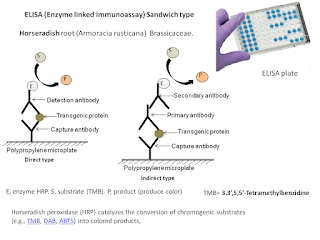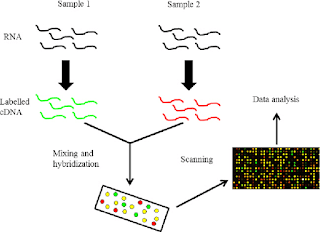Stereochemistry an Introduction
I'm made to realise that I'm not clear enough or good at something, I try to make myself clear with it. It happened , I am preparing for my exam during my preparation for Exam , The question was asked about Stereoisomer but, unfortunately, I was not very clear with the molecular reason behind it.(but, still I managed to answer the question as I know the theoretical information from my notes, but, knowing the molecular mechanism behind each concept clearly is very important, isn't it?).
But, nothing is wrong in it, I made myself clear with it now. That's good, right?
So, let me share with you some basic principle and an introduction with Streochemistry and how it affects molecular structure, Biochemistry and Metabolism so here we go
Just like with any other field of science, chemistry is not two dimensional. To get an accurate chemical analysis, the three-dimensional spatial arrangements of the atoms (and ions) in the molecules have to be considered. Amongst compounds which share the same molecular formula, there are a group of compounds with the exact same order in which the atoms are joined together yet are different. These compounds are known as stereoisomers. Despite their similarities, their arrangement of the constituent atoms in the three-dimensional space are different.
The subdiscipline of chemistry that studies this is called stereochemistry. As we progress through this blog, the differences in chemical properties of the stereoisomers will become increasingly apparent. This will have very profound impacts on the uses and applications of chemical compounds, particularly organic compounds. Amongst these are compounds of pharmaceutical importance, whose stereochemistry could determine the fate of the patients. A particular subfield that deals with this is called pharmaceutical stereochemistry, which we will get to learn more about in no time.
Let us return to general stereochemistry, given the numerous ways in which stereoisomers can be formed, there are also many ways to classify stereoisomers into different categories. Keep in mind that in a group of stereoisomers, more than one of these categories could apply. In fact, some of these classifications have overlaps, so it is best if we do not think of these classifications as mutually exclusive groups, but rather different ways to classify isomers [2].
The first type of classification is based on interconvertibility of the isomers amongst themselves: conformational and configurational isomers. Conformational stereoisomers (or conformers for short) are stereoisomers whose difference in spatial arrangement of their atoms are due to rotation about carbon-carbon (C–C) single bonds. Most conformers can easily interconvert to one another amongst themselves at room temperature. Configurational isomers, one the other hand, do not usually interconvert at room temperature since this will involve breaking and reforming of bonds [1].
A quick example would be to look at molecules (a), (b), and (c). Molecules (a) and (b) can interconvert between each other by simply rotating the carbon single bond. However, molecules (a) and (b) cannot convert to molecule (c) without breaking the carbon-substituent bonds and rearranging the substituents. Hence, molecules (a) and (b) are conformers, while molecule (c) is a configurational isomer to molecules (a) and (b).

The second type of classification is based on mirror images. If a molecule is non-superimposable on its mirror image, the molecule and its mirror image are called enantiomers. This only applies to a very specific type of molecules called chiral molecules, which neither have a plane of symmetry nor a center of symmetry. Enantiomers can interact with plane polarized light. If an enantiomer rotates plane polarized light by a specific angle in a clockwise direction, its mirror image rotates plane polarized light by that same angle in an anticlockwise direction [3].

Chiral molecules often have an asymmetric carbon atom (also known as chiral carbon) which is a carbon atom that is attached to four different types of atoms or groups of atoms. In a molecule with multiple chiral carbons, it is possible to have up to 2n stereoisomers [8]. Stereoisomers which share the same configurations on at least one (but not all) chiral carbon and are not mirror images of each other are called diastereomers. Diastereomers whose configurations on all, but one, chiral carbons are the same have a special name, epimers. Some of you may have noticed that in fact, all conformers are diastereomers, but not all diastereomers are conformers.

Amongst diastereomers that are configurational isomers, we have cis-trans isomers which are isomers of at least di-substituted compounds whose functional groups may be on the same side (cis) or the opposite sides of the carbon chain (trans). While the term is often used on molecules with one or more double bonds, cis-trans isomerism can apply to molecules with only single bonds too [6, 7]. For molecules with alkene group, an alternative convention called E-Z isomerism exists to prevent confusion in nomenclature. The details of the convention will be covered later.

Moreover, amongst conformers, there are very specific types of isomers. that are due to hindered rotation about a single bond or hindered inversion of bond angle. Those due to a hindered rotation is called atropisomers, while those due to a hindered inversion of bond angle is called akamptisomers [5]. Details of these two types of stereoisomers will be covered later.
Fun fact: the first akamptisomers were only discovered last year (2018)!




















